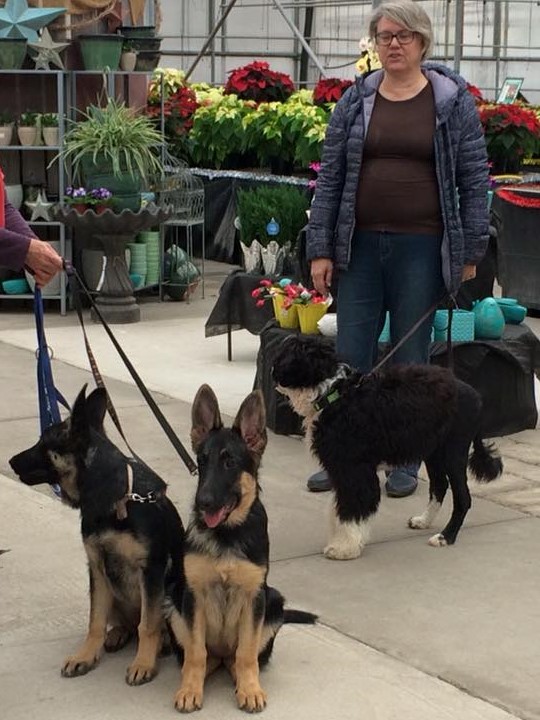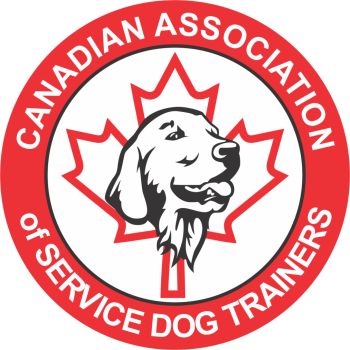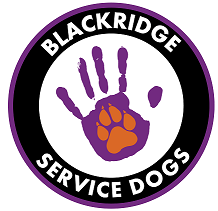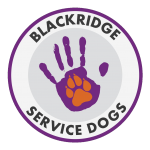
Medical Assist Dogs
Service Dogs Medical Alert Dogs
People with Disabilities and Ontario Law
1 in 7 people in Ontario has a disability. That’s almost 2 million Ontarians. By 2036, that number will rise to 1 in 5 as people age.
Over the next 20 years, aging Ontarians and people with disabilities will represent 40% of total income in Ontario. That’s $536 billion. Ontario has laws to ensure all Ontarians can access your organization’s goods, services or facilities.
The law requires your organization to identify those barriers, and remove them, in order to provide customer service that is more accessible to people who have disabilities.

There is no 'legal' certification but businessess have the right to identify the dog as a 'real' service dog for regulatory and insurance purposes. A restaurant may want proof so that the health board will not close them down
**
In ontario you must have a doctor's note from a recognized source. (see below)
Ontario is the first Canadian Province to pass a law to improve accessibility in the areas that impact the daily lives of people with disabilities.
**
More Info: Ontario is the first Canadian Province to pass a law to improve accessibility in the areas that impact the daily lives of people with disabilities.
**
https://www.ontario.ca/laws/regulation/110191#s80p45s4
**
There are various types of service animals besides guide dogs that support people with various types of disabilities, such as:
**
• vision loss • epilepsy • autism • anxiety disorder
**
There are no restrictions on what type of animal can be used as a service animal. An animal is considered a service animal if:
**
• it wears a harness, vest or other visual indicator • the person with a disability provides documentation from a regulated health professional
Handlers do not have the right to access if it causes a hardship on a business, or if the business/organization is willing to mitigate their disability.
**
If your dog will damage product for sale, violate a municipal law, or infringe on the 'business operations' you may be denyed access.
**
If your dog is deemed disruptive the business has the right to ask you to leave.


The Courts and Service Dogs
The provincial legislation and case law from the HRTO suggest that service animals for disabilities other than vision disabilities are not required to be officially certified in order to qualify as service animals for the purposes of human rights or accessibility legislation. But….
In Robdrup v. J. Werner Property Management, the HRTO accepted that a dog that had not received formal training as a service dog was a personal support animal.
In Allarie v Rouble, the HRTO found that it is not unreasonable to ask for identification or medical documentation to show that the animal is a service animal where it is not immediately obvious that the animal is supporting disability-related needs.
The HRTO held that a medical note should be sufficient to identify the animal as a service animal. The medical note need not disclose the disability, but to explain that the animal is a disability-related need.
The HRTO stated that, once the medical note was provided, it was not for the service provider to use their own observations to identify the animal as a service animal.
In Scott v Siu, the HRTO found that even where the animal was readily identifiable as a service animal, it was not discriminatory in and of itself for the service provider to request further supporting documentation.
In this case, i the Applicant was not refused service. The HRTO found that because it is “notorious that service dog vests can be purchased on the internet”, there was nothing discriminatory in requesting supporting documentation.
The Workplace
https://www.ontario.ca/page/how-make-customer-service-accessible
Step 1: create policies
Develop and put in place polices that outline how you will provide goods, services or facilities to people with disabilities. “Facilities” in this case, refers to rooms or spaces used to provide a service, such as a stadium or a banquet hall. It does not refer to the physical structure of a building.
Document your policies if you are:
a business or non-profit with 50 or more employees
a public sector organization
Make sure your policies are guided by these principles:
Dignity – provide service in a way that allows the person with a disability to maintain self-respect and the respect of other people.
Independence – a person with a disability is allowed to do things on their own without unnecessary help or interference from others.
Integration – provide service in a way that allows the person with a disability to benefit from the same services, in the same place, and in the same or similar way as other customers, unless a different way is necessary to enable them to access goods, services or facilities.
Equal opportunity – provide service to a person with a disability in such a way that they have an equal opportunity to access your goods, services or facilities as what is given to others.
Hander's Responsibility
The hander is both financially and legally responsible for their dog’s behavior in public.
The handler is responsible for being polite and not argumentative. It is their job to make sure the dog does not soil or damage any produce, or interfer with anyone else.
Having a service dog does not negate legal responsibility or give you the ‘right’ for public access.
Any dog that is disruptive may be legally asked to leave whether the handler believes the dog is disruptive, or not.
Canine Welfare
It is the handler’s responsibility to ensure their dog is calm, comfortable, and safe. It is the handler’s responsibility to advocate for their dogs.
Handlers cannot expect others to take care of the welfare of their dog. They also do not have the right to take their dog somewhere the dog can come to harm, like a movie theater where the dog’s ears may be damaged.
Canadian Association of Service Dog Trainers
In Canada there are no governing laws or guidelines for service dog training. The CASDT has worked to help bring a standard to SD organizations and individual trainers, across Canada
